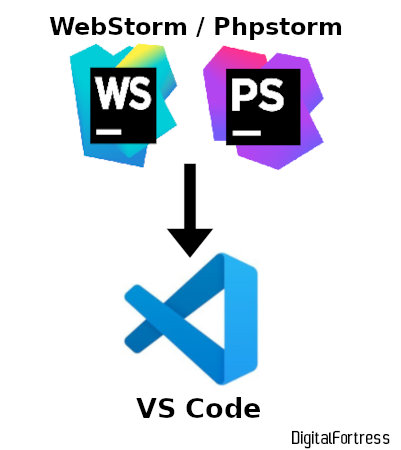

Yes, it's a commercial product but if your outfit pays for it, it comes with great tooling. Give me 3 screens and a VIM configuration sprint and I'm there! I'm old, I like stuff that just works (as much as possible) without getting sucked into customization and configuration. Collecting PHP dependencies, particularly for 7, working with newer language features, doing stuff like finding interface implementations and so on aren't quite on par with others. I like SublimeText 3, but found it unreliable. Also, most plugins I worked with were buggy in mind blowing ways. It's nice for JS for the most part, but throw anything heavy at it and it slows to a crawl. Containers, GIT vizualization, diffs, some UI help and reliably working with other languages are definite pluses. I'm a PHP dev but I appreciate and IDE that can help with other stuff reliably. I recommend reading the gitignore documentation to learn more about the patterns you can use to exclude files.Yes, I know how the title sounds and it's probably going to get some people riled up over other IDEs but there are some things worth mentioning: gitignore and don't make the people on the internet spend hundreds or thousands of hours on this.ītw. As it becomes more popular, there will be a flood of commits and Pull Requests with add. Imagine that there is a new editor called Extra Textedit with an advanced AI which really helps with coding. I can't remember using it, but you may find it useful in some situations. But those exclusions are not versioned, so the others won't benefit from them. git\info\exclude file to exclude files for a single repository. On the other hand, do you expect to receive high-quality contributions from developers who don't bother to properly configure their workstations? 3.git\info\excludeįor the sake of completeness, I must mention the third option. But if you are managing an open-source application or library, you may want to make it easier for newcomers to submit patches - even though you know it is not a clean solution. There is no point in adding those for the internally developed applications, as you can nudge each developer to properly configure his workstation. From a quick Github search you can see that there are almost 200k results for commits which mention some commonly ignored directory: Quite often I see people adding those anyway. gitignore file in your home directory: # create ~/.gitignoreįrom now on, those will be ignored in any git repository on your machine. gitconfig file which usually resides in your home directory: # add this to ~/.gitconfig:Īnd create the. When you add something there, it is ignored in any repository, so you don't have to exclude those files in every project you happen to be working on. There is a perfect place for them - the global. vscode (VS Code), Thumbs.db (Windows thumbnails cache). gitignore, because they may differ from developer to developer.Ĭommon examples are. Those shouldn't be excluded using the project's. Some files or directories present in the application directory are not created by the application itself, but by the operating system or other applications.

The important thing is that those files are created by the application itself by either building it, running it or doing some work on it. phpcs.xml <- local PHPCS config used for overriding the default phpunit.xml <- local PHPUnit config used for overriding the default vendor/ <- dependencies installed through Composer gitignore may look like this (I included an explanation on each line): /.env.local <- local config Best examples are cache files, logs, local configs etc. In it you should list any files or directories which are created by the application itself. gitignore in the project is the most important one. What if I told you that there are other ways to exclude temporary files from the project? There are three. gitignore file in the project root directory. When you are using git (or any other version control), there are some temporary files in the directory structure, which should not be included in the repository.


 0 kommentar(er)
0 kommentar(er)
